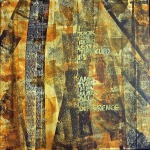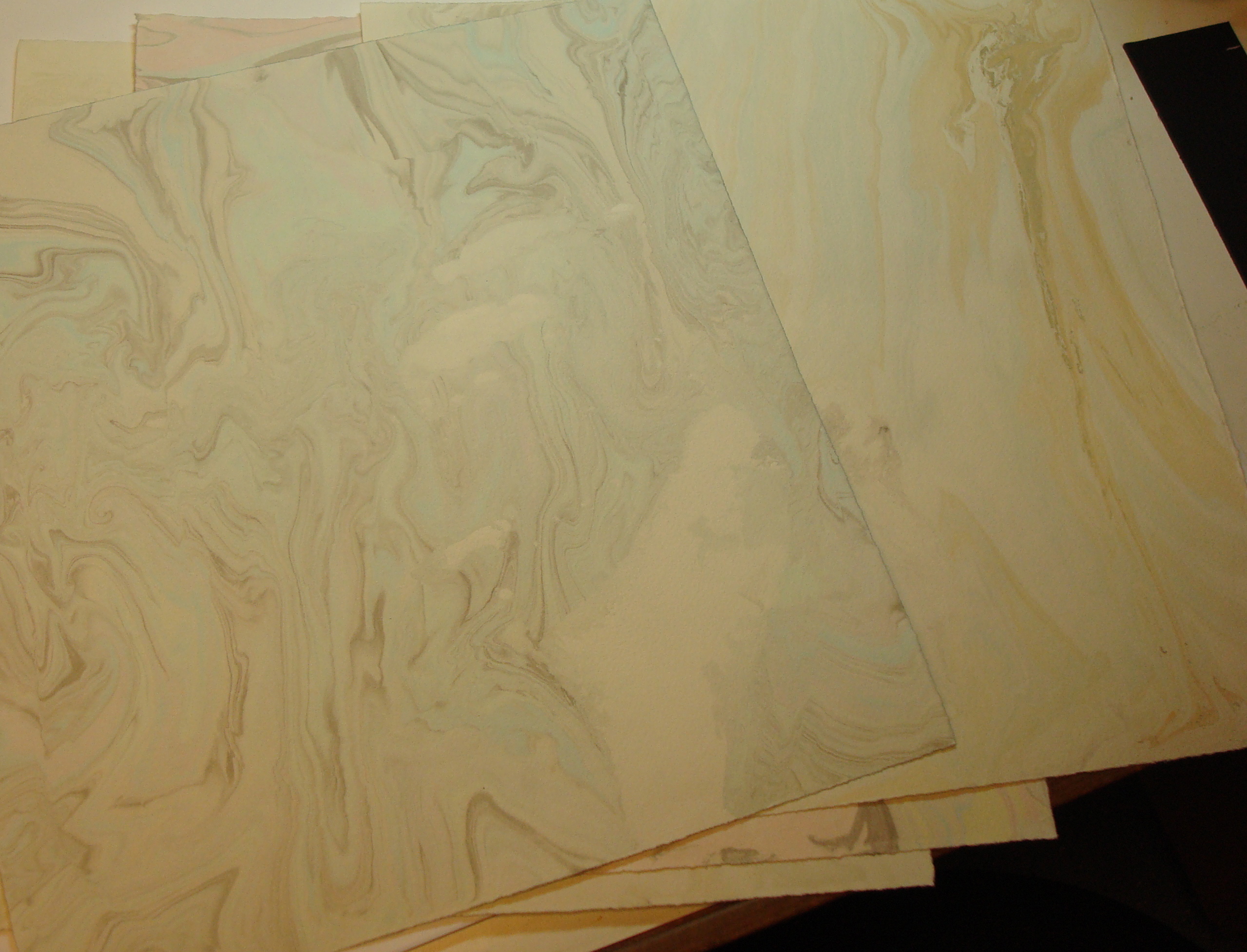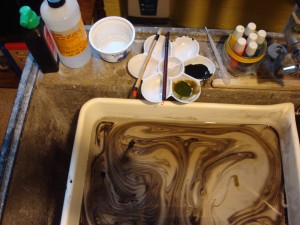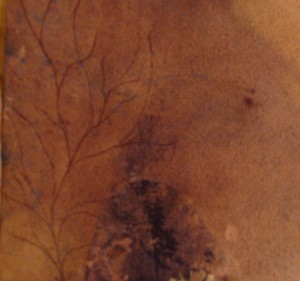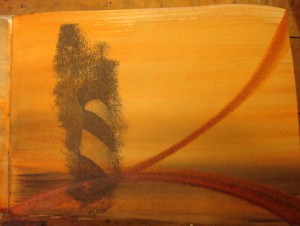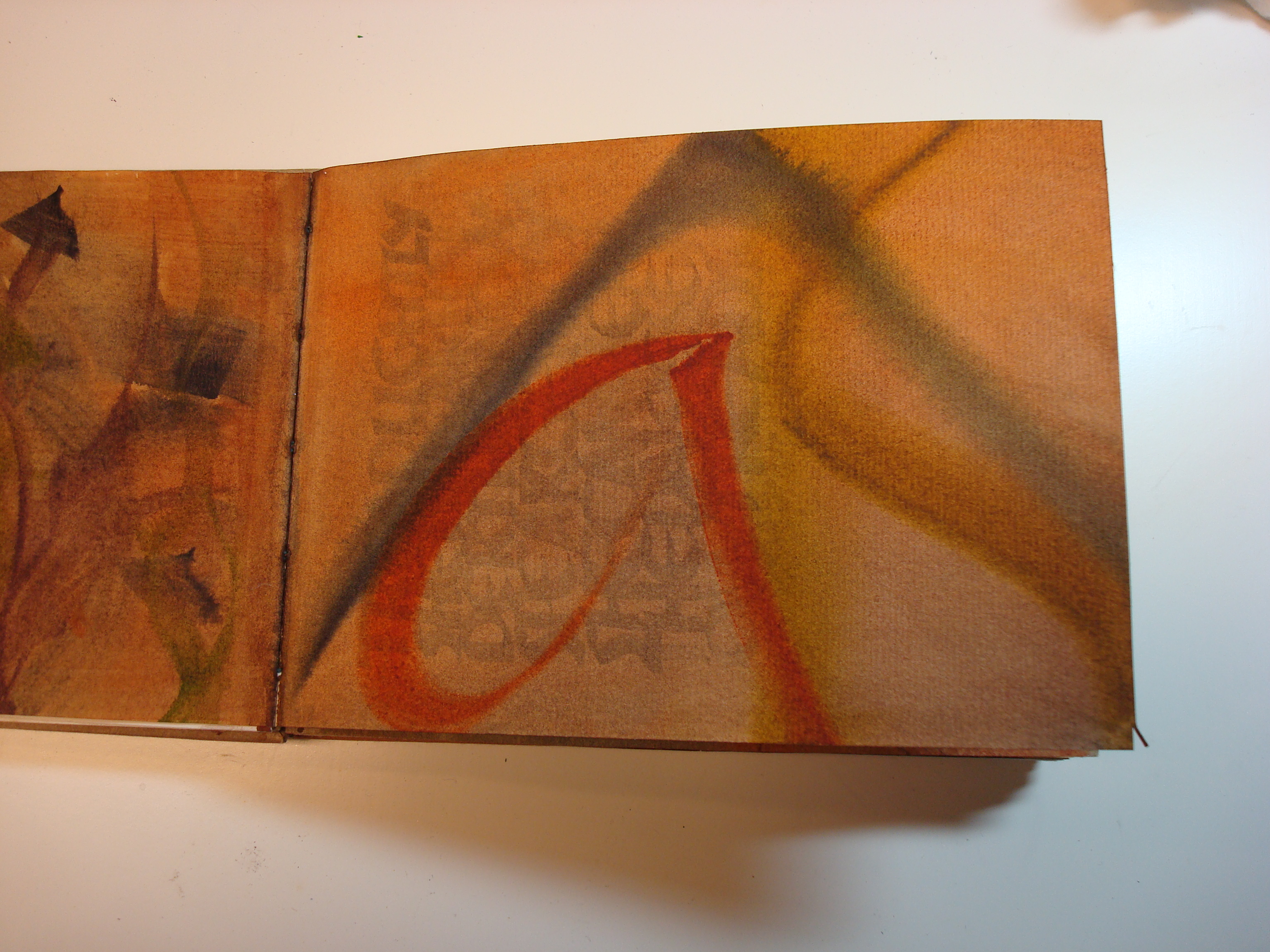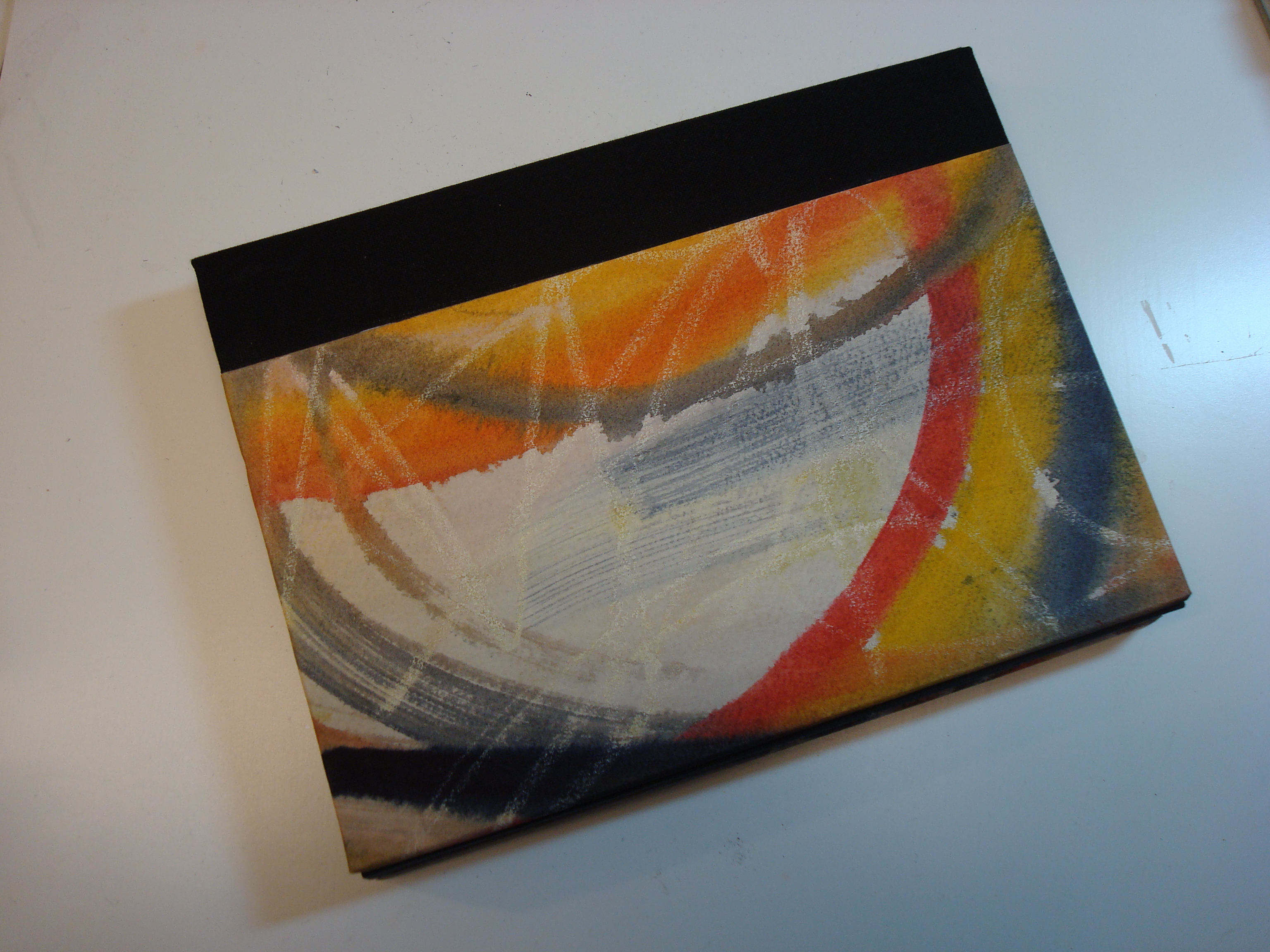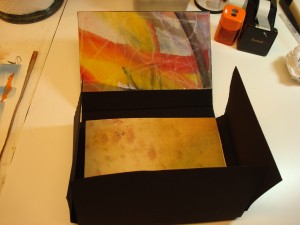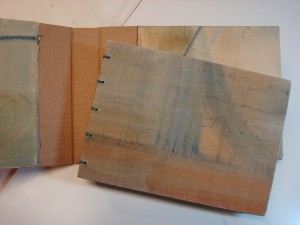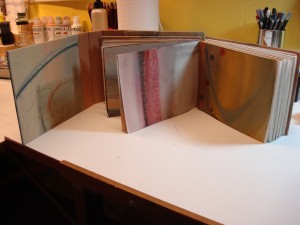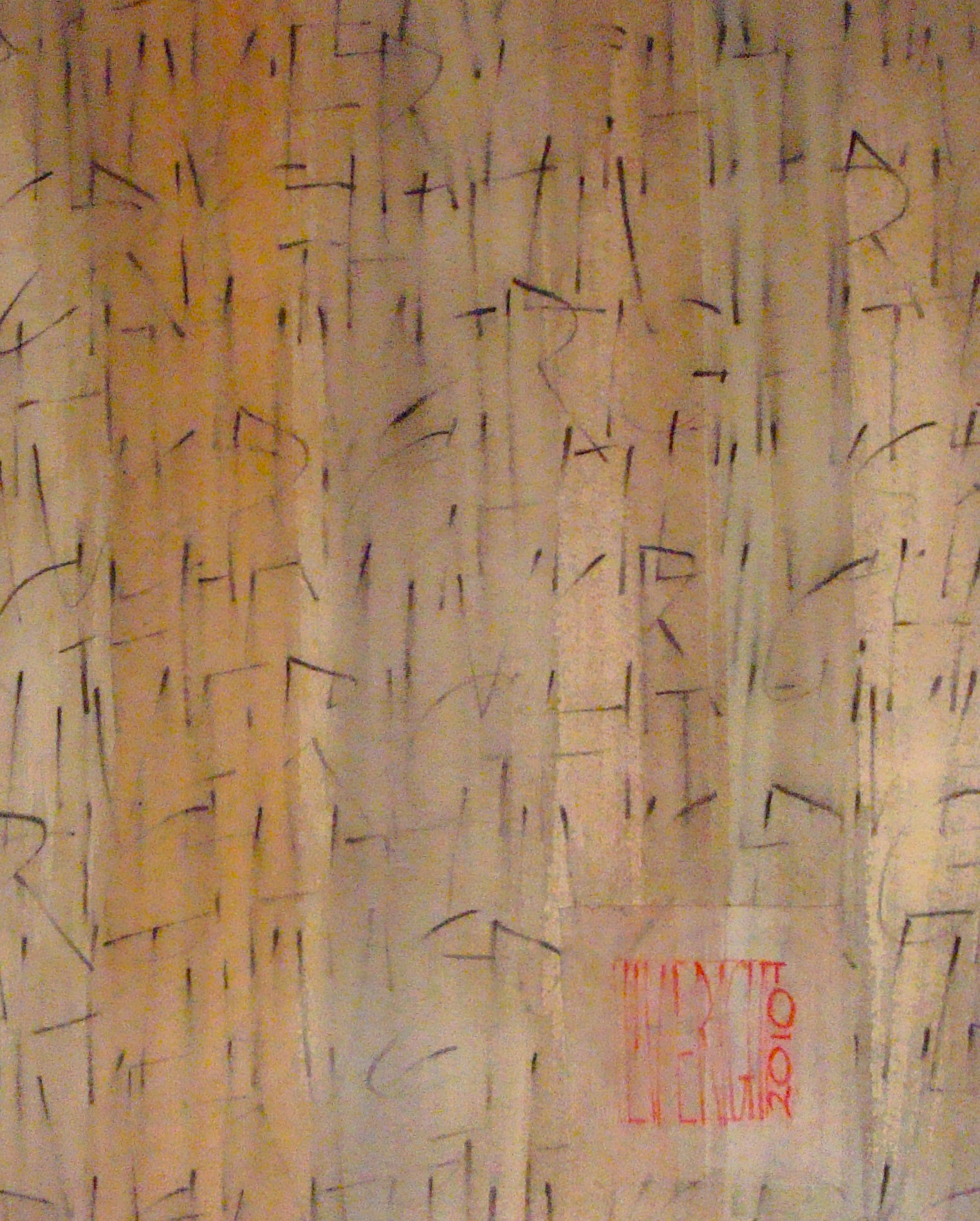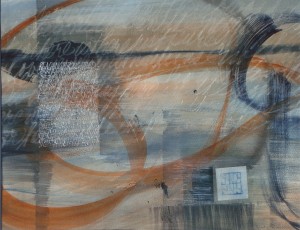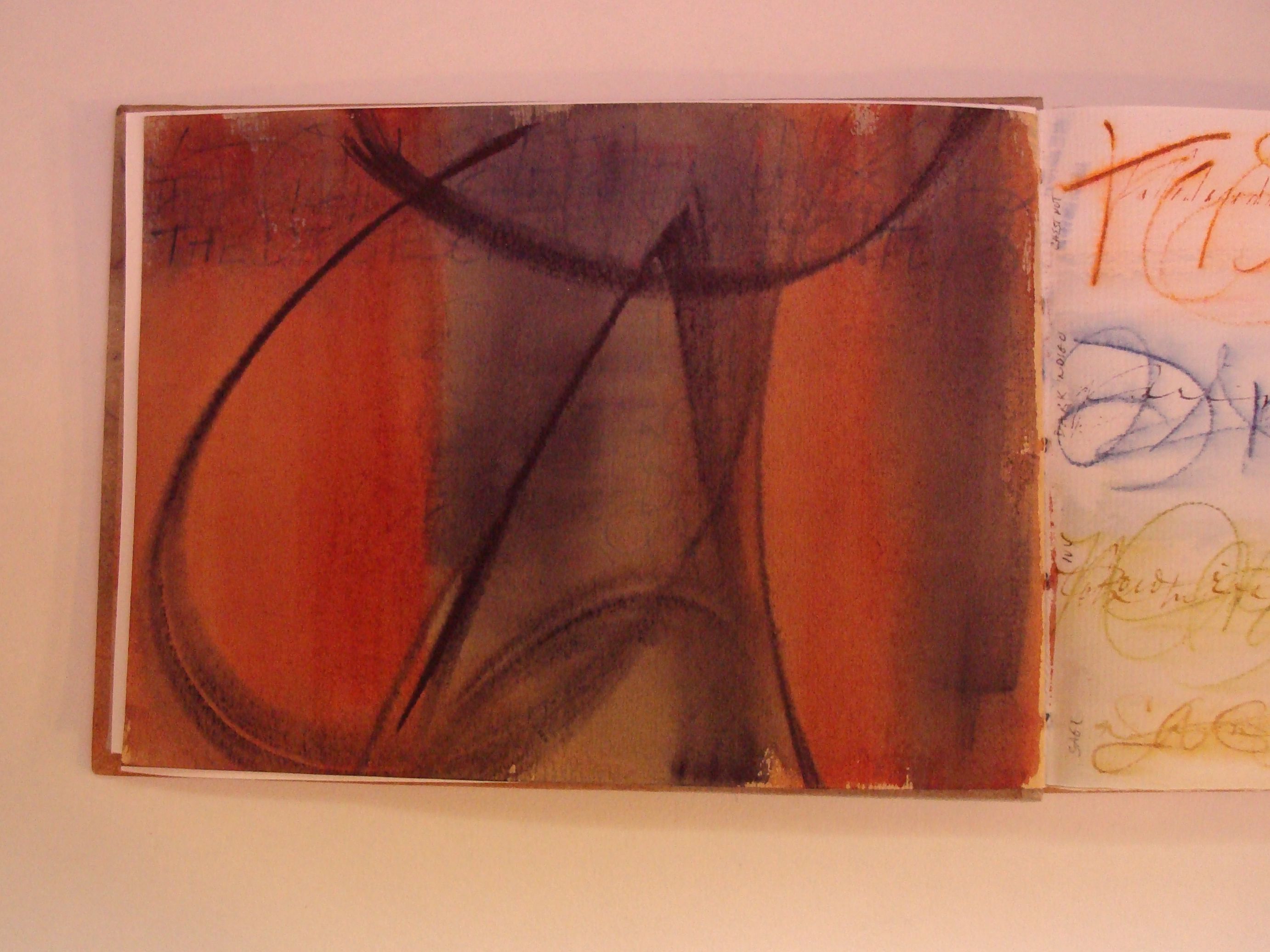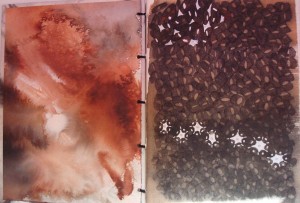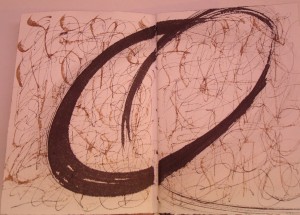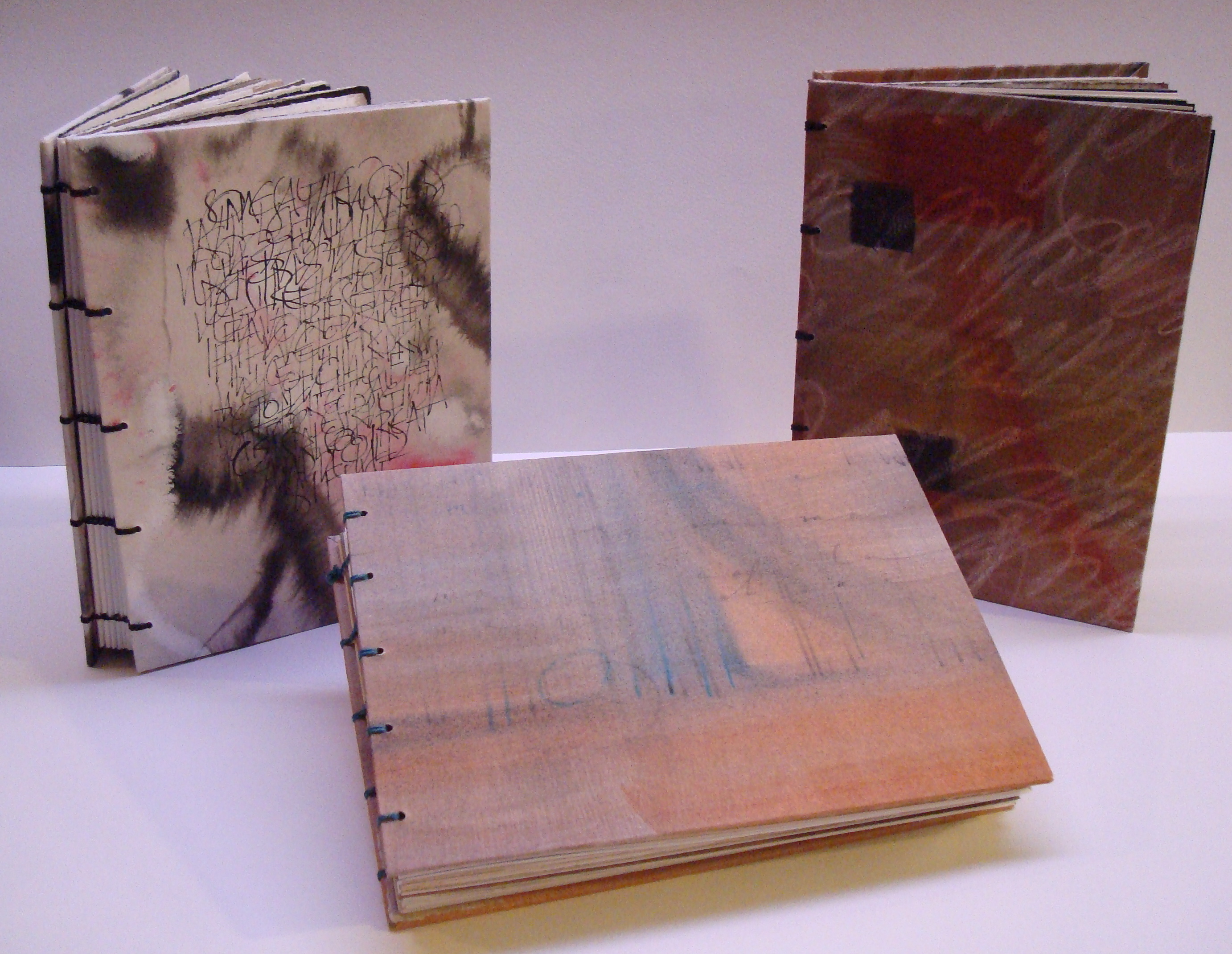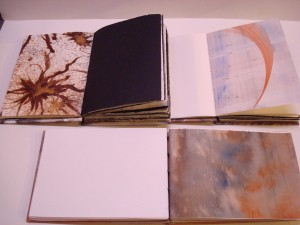I spent the first week of May at Cheerio with twenty six wonderful students and master calligraphic artists, Sheila and Julian Waters. Mother and son comprise a teaching duo that sometimes contradict, but always complement each other’s work. If you’ve been involved in studying the calligraphic arts for any amount of time, you surely have come to know both their works.
Originally designed as two half week classes, the classes were combined into one large group. Sheila’s component involved designing a traditional manuscript book from inspiration to execution. Julian’s involved writing with large instruments such as ruling pen, cola pens, coit or automatic pens, etc. It might not seem that those two topics would blend together in one workshop, but the duo of Waters and Waters made it happen in a fluid and seamless way.
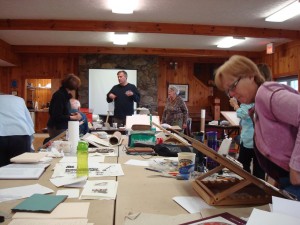
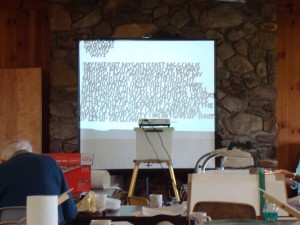
Their use of digital media as a method of instruction was amazing. For the first time in any workshop I’d ever attended, we could sit at our seats, watch all the demonstrations and simultaneously write and take notes. It was amazing. Something so mundane as pen angle could be viewed in detail unavailable if we were to all stand around a demonstration table and we could try it at the same time.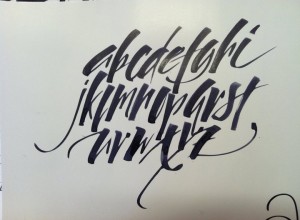
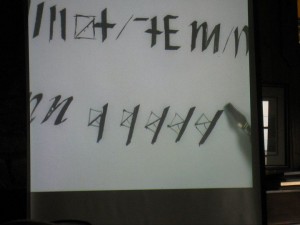
From the beginning our focus would include the rich history of manuscript design. With the use of the camera, Sheila was able to show us actual manuscript pages, zooming in so that we could see the tiniest detail. Most amazing of all was that from the earliest pages of the Book of Kells to current manuscript design, margins and page layout is timeless. Traditional margins and layout were just as relevent now as in the tenth century.
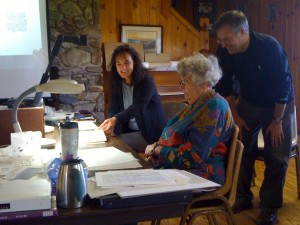 Interspersed with choosing our words and script, designing our layout, learning the ins and outs of paper cutting and book design, Julian created a fun atmosphere of ruling pen work. In addition to learning to write with the pens, we looked at the many varied ways of using the non-traditional tools. Just something as simple as changing the weight with the letters could create a completely different look to your page. Our layout options were definitely increasing exponentially.
Interspersed with choosing our words and script, designing our layout, learning the ins and outs of paper cutting and book design, Julian created a fun atmosphere of ruling pen work. In addition to learning to write with the pens, we looked at the many varied ways of using the non-traditional tools. Just something as simple as changing the weight with the letters could create a completely different look to your page. Our layout options were definitely increasing exponentially.
As the week progressed, we were able to present our work for a sort of semi-public critique. Rather than the usual one on one, table to table individual help, we placed, at first with some trepidation, our work under the camera. What a wonderful surprise for all of us. No matter what our level of expertise, Sheila and Julian found positive elements along with inspiration to improve. We all learned from twenty-six individuals and two master teachers.
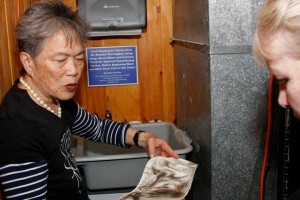
Cheerio is an amazing place. You meet and make great friends. You can work anytime of day or night and the atmosphere of the mountains is guaranteed to put you in a creative mood. In addition to the instruction from fabulous mentors, we also learn from each other. Helen, Annie and Takako demonstrated Ranger Inks as we made small mock-up books to sew and Helen took an evening to help us learn suminagashi.
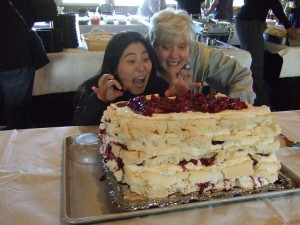 And I would be completely remiss if I didn’t add a bit about the food. Martyn is an amazing chef. From things like apricot glazed pork to all the salad choices to desserts that are to die for, he makes our week of artistic wonder a culinary delight.
And I would be completely remiss if I didn’t add a bit about the food. Martyn is an amazing chef. From things like apricot glazed pork to all the salad choices to desserts that are to die for, he makes our week of artistic wonder a culinary delight.
I could write pages about my amazing weeks in the North Carolina mountains. Joyce and Jim Teta along with John Stevens, Martyn Armstrong and the folks at Camp Cheerio as well as a host of amazing instructors and students have teamed up for the past thirty years to make this one of the most amazing artistic experiences a calligrapher or book artist can attend. It’s truly a “calligraphic heaven on earth”.
